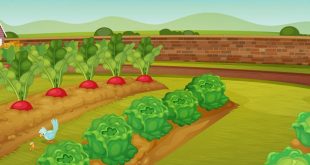Every person on this earth has an aim in life. Some decide on it very early in life, while some are able to decide only later. It is very difficult to choose a goal for life, when one is young. Also, we tend to change our minds as we grow …
Read More »भारत पाकिस्तान सम्बन्ध पर विद्यार्थियों के लिए हिंदी में निबंध
आज भारत और पाकिस्तान पड़ौसी देश हैं। आज से 50-55 वर्ष पहले इन दोनों देशों के निवासी एक ही देश, एक ही भूखंड के निवासी थे। अंग्रेजों की कूटनीति के कारण देश का विभाजन हुआ और एक नये राष्ट्र पाकिस्तान ने जन्म लिया। आज भी दोनों देशों के निवासियों में …
Read More »भारत-रूस सम्बन्ध पर विद्यार्थियों के लिए हिंदी में निबंध
स्थूल दृष्टि से देखने पर भारत तथा रूस में समानता से अधिक असमानताएँ दिखाई देती हैं। भारत एशिया का देश है, रूस यूरोप का; भारत धर्म, अध्यात्म, ईश्वर की सत्ता में आस्था रखता है, रुस अनीश्वरवादी है, वह धर्म को चेतना सुलाने वाली अफीम मानता है। रूस कार्लमार्क्स के सिद्धान्तों …
Read More »NCERT 6th Class (CBSE) Science: Habitat of the Living
Question: Name some plants found on mountains. Answer: Oaks, Pinus and Deodars. Question: What is habitat? Answer: The place where organisms live and which provide food and safety for them is called habitat. Question: Name a few habitats. Answer: Forests, grassland, mountains, ponds and oceans etc. Question: Name two organisms …
Read More »NCERT 6th Class (CBSE) Science: Changes Around Us – Quiz
NCERT 6th Class (CBSE) Science: Changes Around Us – Quiz 18 Multiple Choice Questions related to NCERT 6th Class (CBSE) Science: Changes Around Us – Quiz: Growth is a life process that take due to so many chemical changes that take place in the cells. The changes which take place …
Read More »NCERT 6th Class Science: Getting to Know Plants – Quiz
NCERT 6th Class Science: Getting to Know Plants – Quiz 26 Multiple Choice Questions related to NCERT 6th Class Science: Getting to Know Plants – Quiz: We cannot exactly recognise the leaves without seeing them. We may be able to have some idea by touching and smelling them. We find …
Read More »NCERT 6th Class (CBSE) Science: Getting to Know Plants
Question: Can you find a plant in your house or in your neighborhood which has a long but a weak stem? Write its name. In which category would you classify it? Answer: Yes, we find a money plant in our house. It is a climber. Question: What is the function …
Read More »NCERT 6th Class (CBSE) Science: Living and Non-living – Quiz
NCERT 6th Class (CBSE) Science: Living and Non-living – Quiz 8 Multiple Choice Questions related to NCERT 6th Class (CBSE) Science: Living and Non-living – Quiz: The cell is the structural and functional unit of like. A cell is the smallest livings structure that is able to function independently. A …
Read More »NCERT 6th Class (CBSE) Science: Living and Non-living
Question: Define a cell. Answer: The cell is the structural and functional unit of like. A cell is the smallest livings structure that is able to function independently. Question: Define environment. Name the different components of the environment. Answer: All that surrounds living things and affects their growth and developments …
Read More »NCRT 6th Class (CBSE) Science: Form and Movement in Animals – Quiz
NCRT 6th Class (CBSE) Science: Form and Movement in Animals – Quiz 21 Multiple Choice Questions related to NCRT 6th Class (CBSE) Science: Form and Movement in Animals – Quiz: The changing position of the body or any part of the body is called movement. The shoulder bones are formed …
Read More » Class Notes NCERT Solutions for CBSE Students
Class Notes NCERT Solutions for CBSE Students







